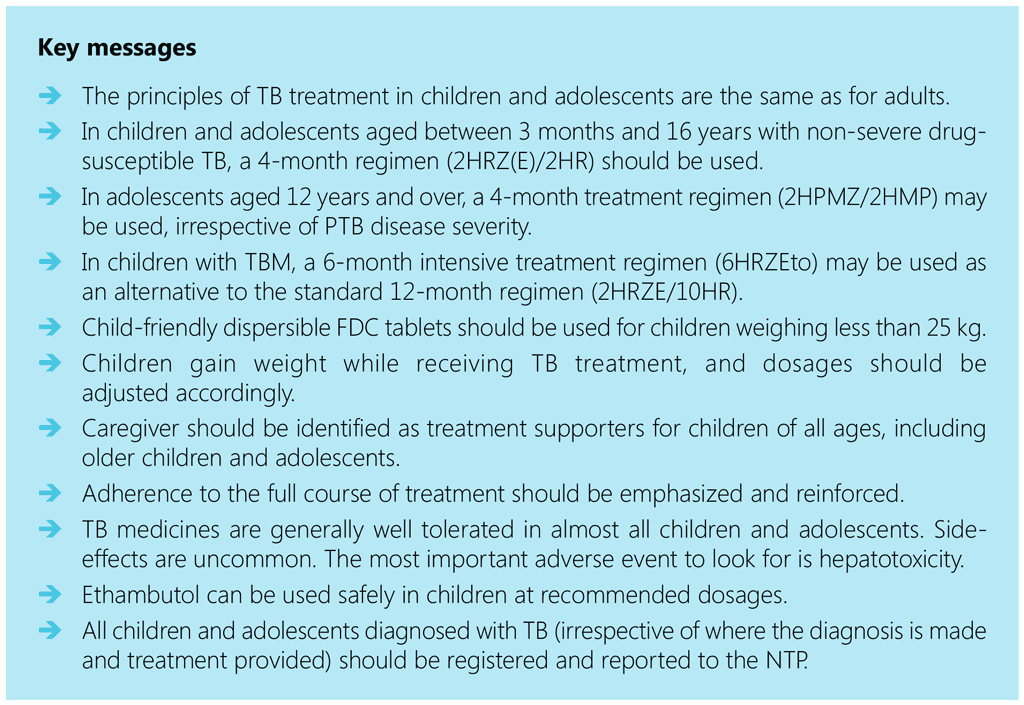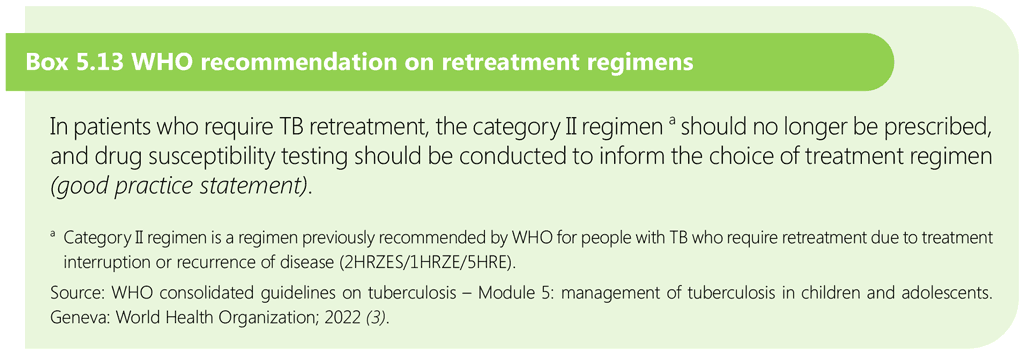5.3.4.1. Monitoring response to treatment
Monitoring the response to treatment in children and adolescents includes clinical, radiological and microbiological parameters. In children, microbiological monitoring of the response to treatment may be challenging for the same reasons as it being difficult to obtain a microbiological diagnosis. In children and adolescents with a bacteriologically confirmed diagnosis, however, it is important to monitor smear and culture conversion and confirm cure, as recommended by WHO.
 Feedback
Feedback
